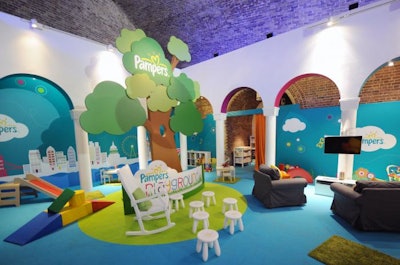
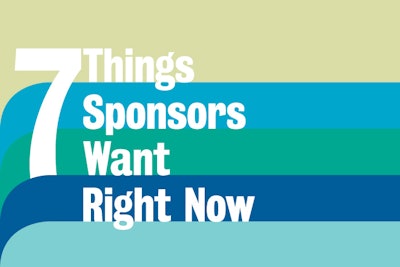
It might sound basic, but wireless Internet access is still not universally available, and sponsors want it badly. On-site social media needs to be able to flow and allow for instant response—“especially when it comes to surveys, contest fulfillment, and live-streaming from events,” says Angel City Designs’ Mark Yumkas, based on his team’s experience with recent events like the Battle 4 Atlantis college basketball tournament over Thanksgiving in the Bahamas. “Accessible, free, secure, high-bandwidth Wi-Fi is the backbone for all other applications,” Yumkas says. “You can design and activate all the compelling online social media activations you could possibly imagine, but if your guests or patrons cannot access the information in a timely fashion—or the sponsor cannot deliver all of the information that is created—then the content can be devalued from a performance and impression standpoint.”
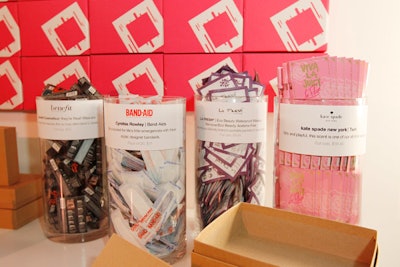
It’s not new that sponsors want to align with nonprofits, but the importance of pairing up with great causes is more important than ever for brands, especially in light of recent, widely witnessed tragedies like the damage wrought by Hurricane Sandy. Brands are seeking out nonprofits that fit with their visions for corporate responsibility and developing partnerships that go well beyond the hours of the live event.
Jennifer Howell, founder of arts nonprofit Art of Elysium, says sponsors have been reaching out to her group “all the time” versus the more traditional other-way-around route of event hosts courting sponsors. She indicates that she’s seeing charities trying to accomplish their marketing and philanthropic goals in one fell swoop by blurring the line between those previously separate budgets.
She described a recent partnership in which beauty product delivery company Birchbox sponsored a couple of the charity’s events, setting up a bar (pictured) where people could come and fill their own boxes with products of their choice. Some of the charity’s supporters built their boxes, took photos, and gave quotes that were used for an online promotion that focused on the charity’s work as well as the holiday product collection.
Birchbox then put the organization’s logo and mission on its boxes, which were distributed to all of its shoppers in November, as part of a holiday giving campaign. “This helps us greatly to reach a new audience with our mission,” Howell says, while also acknowledging the benefit to Birchbox’s bottom line at a time when its consumers are eager for feel-good stories.
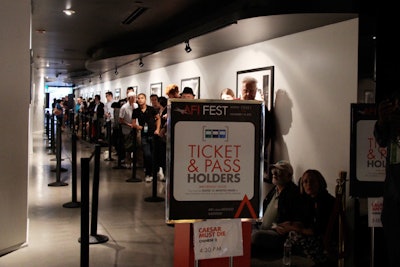
Yes, many sponsors want to align with a select, invite-only crowd of “influencers.” But in the current climate, sponsors—including some elite brands—are also looking for mass-market exposure.
For instance, luxury automaker Audi is the title sponsor of the American Film Institute’s A.F.I. Fest (pictured), which now gives free tickets to consumers. “Access to our audience gives Audi the ability to reach a wide variety of potential customers in a relatively short amount of time,” says festival producer Derek Call. “The festival attracts an audience comprised of both industry professionals and movie lovers from all over the globe, and we generate billions of impressions for them other than just the eyeballs of those guests in attendance. Our guests see what Audi has done for them by giving them a free ticket and by supporting the art of filmmaking. It shows how Audi as a brand is accessible to all different types of potential car buyers, and at the end of the day, Audi needs to sell as many cars as possible."
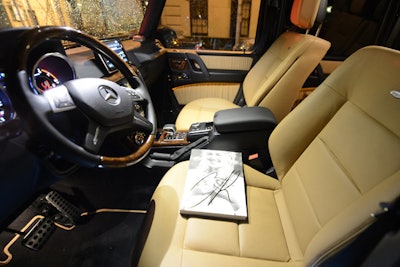
It’s still key for vendors to get attendees interacting with products, not just looking at logos. Sponsors want guests to experience their brand as they would as consumers outside of events in immersive, authentic-feeling sponsorship integrations.
In September, Mercedes-Benz partnered with Carine Roitfeld on the launch of her new magazine, CR Fashion Book, sponsoring the black-tie gala at the Frick Collection in New York. The event offered guests a sneak peek of the magazine from inside the comforts of the brand new G63 AMG, parked outside the museum (pictured). The next day, media could preview advance copies of the magazine in the Mercedes-Benz Star Lounge at Lincoln Center. “Experiential marketing has been a consistent and significant part of our arsenal,” says Mercedes-Benz USA department manager of brand public relations Adam Paige. “It’s an element that is a cornerstone of our activations. Experiential on a physical car level, yes, but also a brand experience—it’s a Mercedes-Benz experience.”
Similarly, last summer Lucky Brand hosted an event at a Malibu beach house with an intimate concert by Regina Spektor, but nary a logo was in sight—part of an effort to avoid heavy-handed marketing to an upmarket audience. In the gift bags, guests received a certificate for a private fitting of a custom denim wardrobe at the brand’s new downtown Los Angeles headquarters. That personalized appointment exposed them to the product and the brand’s culture in a meaningful way.




















